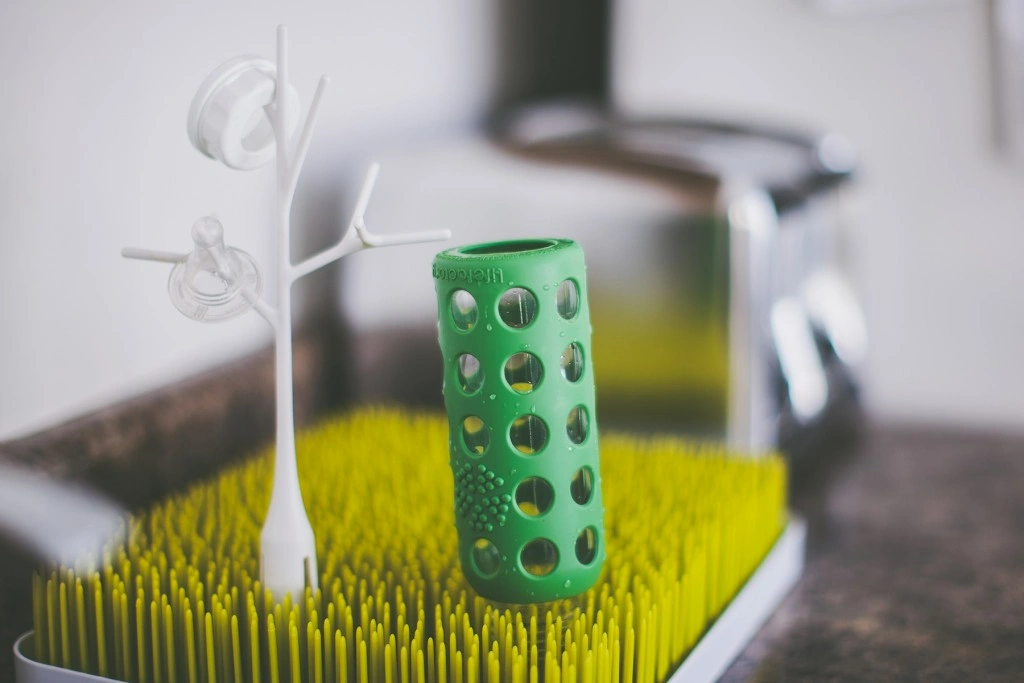
Your baby goes through a handful of bottles every day. And when baby cries “baba,” it’s easy to grab an empty one off the counter and give it a quick rinse. The quick rinse might be OK in a pinch, but germs and bacteria will cultivate over an extended period of time.
Proper bottle cleaning is especially important because young children and infants are at an increased risk for food poisoning — and you don’t want your little bundle of joy to experience something so unpleasant, let alone dangerous. Always make sure you give your baby bottles a thorough cleaning at least once a day.
How to Clean a Baby Bottle
- Rinse the bottle as soon as your babe is finished. This will prevent bacteria from the milk and your baby’s mouth from multiplying.
- Fill your sink with warm, soapy water. Let your bottles, nipples, caps and rings soak. Use a baby bottle brush to get deep inside the bottle. There are also special brushes for cleaning the nipples, caps and other parts. We recommend scrubbing each part for about 10-15 second — make sure you get every crack and crevice!
- Let your bottle and parts dry completely. We recommend using a drying rack to prevent moisture from settling. There are plenty of options out there; we like this grass-like rack. It even has a special “twig” for airing out the nipples and caps.
How to Sterilize a Baby Bottle
Thoroughly washing your baby bottles at least once a day is an absolute must. It’s also smart to sterilize your bottles every so often, especially if your little guy or girl has been sick. First and foremost, check your bottle for instructions! Since most methods involve heat, you don’t want harmful chemicals leeching out of the plastic. Many mothers prefer glass bottles to plastic bottles because of concerns over BPA and other chemicals.
There are several ways to sterilize your baby bottles:
- Sterilize Bottles in the Microwave — Some parents invest in special microwave steam containers that are designed to hold bottles, nipples and other bottle parts. Steam bags are also a popular option, especially for sterilizing breast pump parts. Just fill with the recommended amount of water and microwave for the recommended amount of time. The steam kills all of the nasty bacteria.
- Sterilize Bottles by Boiling — The old school method is to boil a large pot of water. We recommend using a pot or pan that is used exclusively for sterilizing bottles — no cooking. Make sure your bottles and parts are submerged and let them boil for 5 minutes. Once again, we cannot overstress the importance of checking your bottle instructions.
- Sterilize Bottles in the Dishwasher — Although it seems obvious, the dishwasher is a viable solution as long as it has a steam clean cycle. Most dishwashers will hit 140 degrees Fahrenheit, which is hot enough to effectively kill germs and bacteria.
Giving your baby bottles a proper clean requires a little extra work. Just an extra minute can help protect your baby from food-borne illnesses. And if time is not in abundance, contact your local Molly Maid about setting up a flexible house cleaning plan that gives you some time back — like more time to spend with your beautiful little family!
